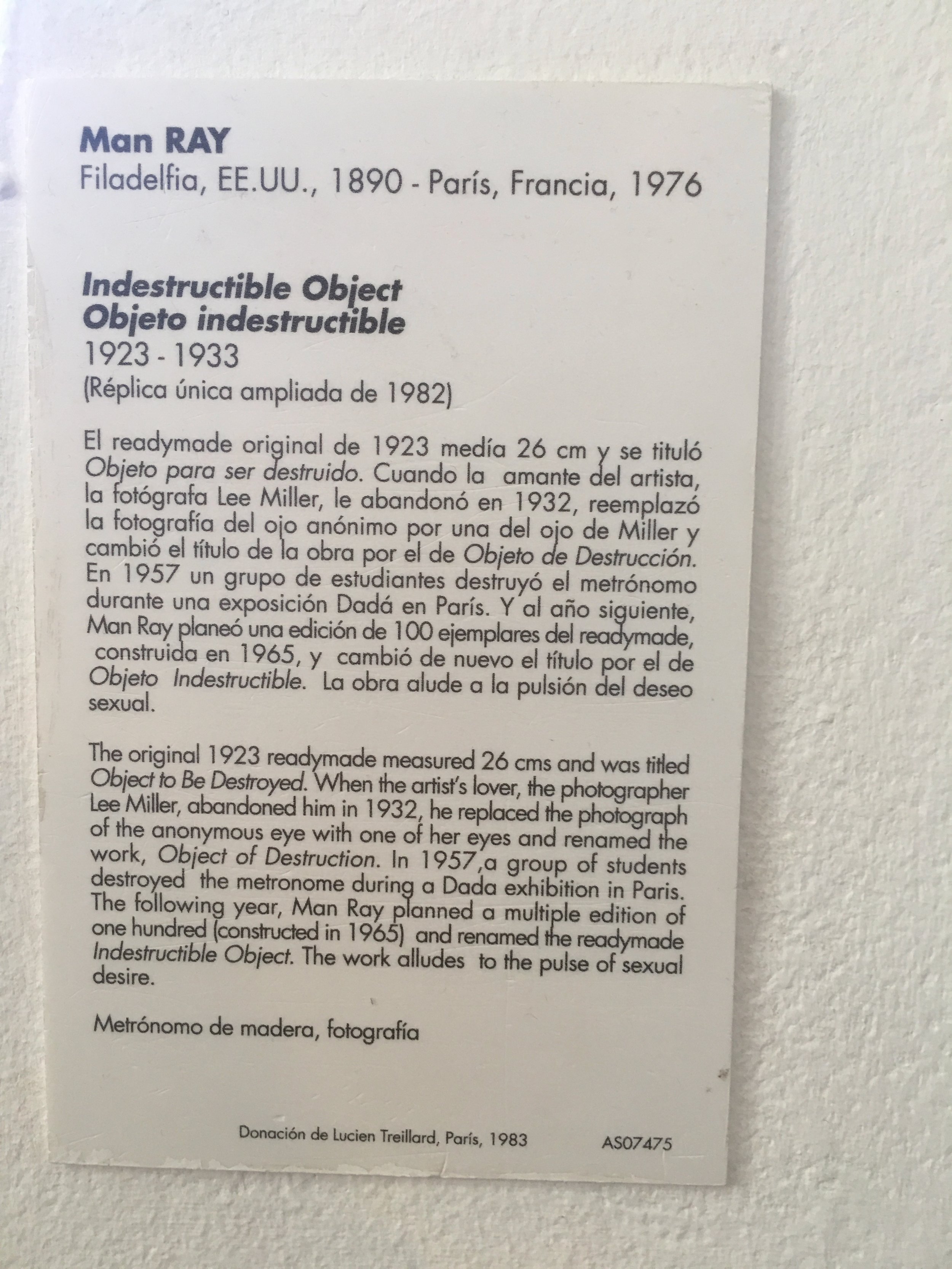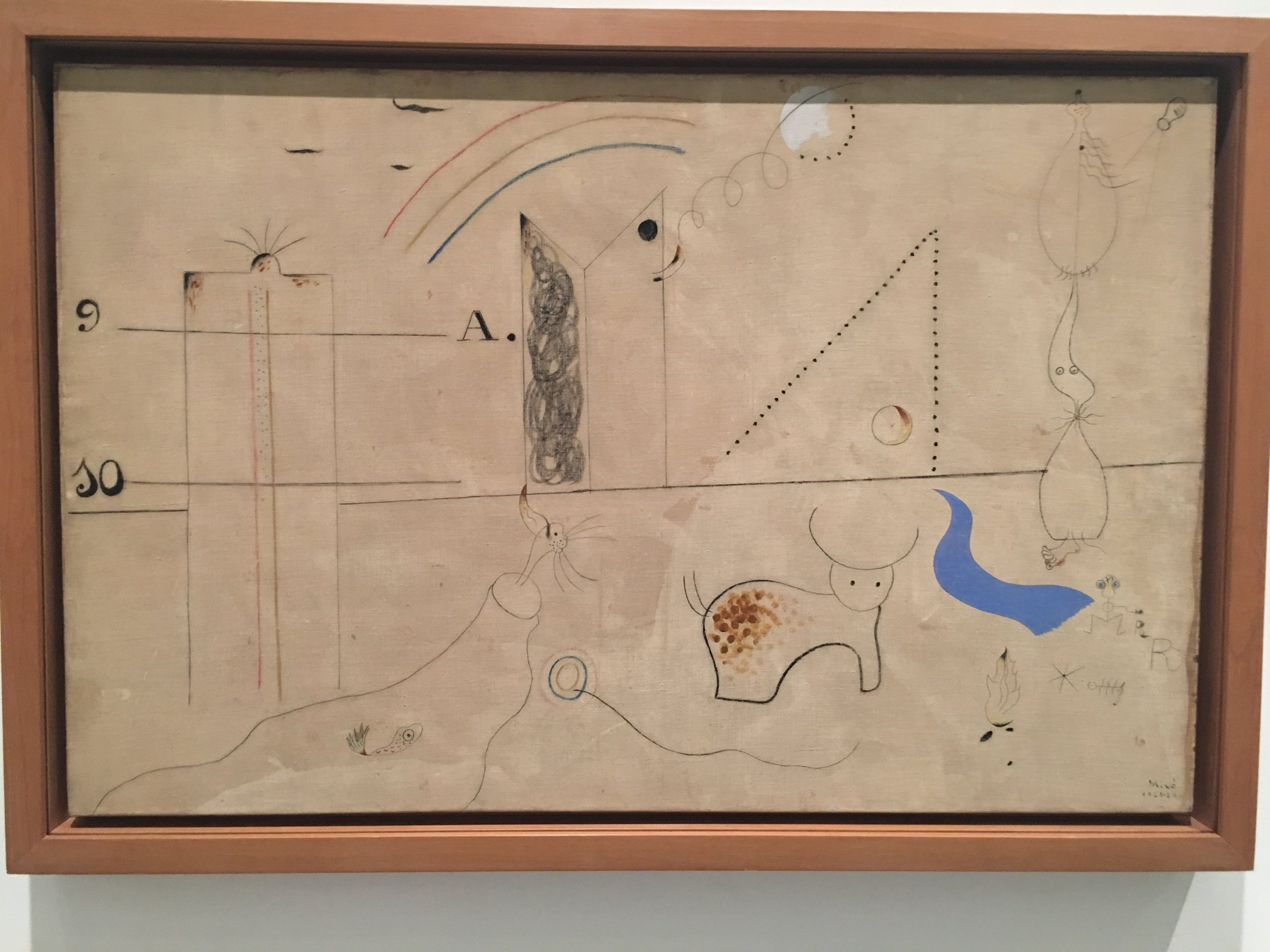The Sabatini Building
Address:
52 Santa Isabel Street
28012, Madrid, Spain
Website:
WHAT I LIKED: the labels, the audio guide symbols and the verbal description tour
WHAT I MISSED: a full app for the collection
To read a summary of the blog please click the IN SHORT button
Just a short distance from the Museo Nacional del Prado you can find several other museums. On my recent visit to Madrid I directed my steps to the Museo Nacional Centro de Arte Reina Sofia.
The Building
The first foundation of this building was laid in the sixteenth century to found the San Carlos Hospital. In the eighteenth century the building was enlarged by architect Francisco Sabatini, famous for designing Madrid's city center. It remained a hospital, with several reconstructions and additions until 1965 when it was finally closed. In 1977 it was declared a national monument by Royal Decree for its historic and artistic value.
In 1986, the Reina Sofia Art Center opened its doors to a part of the building to host temporary exhibitions. In 1992, King Juan Carlos and Queen Sofia inaugurated the Permanent Collection of the Museo Nacional Centro de Arte Reina Sofia.
Since then the museum follows its goals - to conserve, expand and exhibit its collection, to hold exhibitions at an international level, and to offer training and education.
The need for more space led to the construction of the new building by Jean Nouvel, which opened in 2005. The Nouvel building increased the much needed exhibition space, and its well designed public square increased the public city space.
The Museum
The collection begins with the end of the 19th-century, addressing the conflicts between modernity and the constant changes in social and political fronts, and the cultural and artistic developments.
The museum is mainly dedicated to Spanish art. Highlights of the museum include excellent collections of Spain's two greatest 20th-century masters, Pablo Picasso and Salvador Dalí. Certainly, the most famous masterpiece in the museum is Picasso's Guernica.
The Reina Sofía collection includes works by artists such as Joan Miró, Eduardo Chillida, Pablo Gargallo, Julio González, Luis Gordillo, Juan Gris, José Gutiérrez Solana, Lucio Muñoz, Jorge Oteiza, Julio Romero de Torres, Pablo Serrano, and Antoni Tàpies.
International artists shown in the collection are Francis Bacon, Joseph Beuys, Pierre Bonnard, Georges Braque, Alexander Calder, Robert Delaunay, Max Ernst, Lucio Fontana, Damien Hirst, Donald Judd, Wassily Kandinsky, Paul Klee, Yves Klein, René Magritte, Henry Moore, Gabriel Orozco, Man Ray, Diego Rivera, Mark Rothko, Julian Schnabel, Richard Serra, and Cindy Sherman.
Pablo Picasso: Guernica, taken form the app The Essential Art Walk
Verbal Description Tours
The museum has a very active accessibility department and offers regular tours with verbal description and touch objects called “Museo a Mano” (Museum by Hand).
I had contacted the department a few weeks before my visit and was able to attend one of the tours, hoping that my beginner’s level Spanish would be of help. To my pleasant surprise the kind docent found an American intern to translate the tour for me! What a special treat!
These tours are for a small group of visually impaired or blind persons. No more than six participants at a time, which makes the tours very personal and intensive. For each of the paintings the museum had made high raised drawings available for each participant. This enabled us to touch, listen and see at the same time. I loved to experience the selected paintings in such great detail, including the history of the paintings and the artist.
Top: Joan Miró: Man with a Pipe
Middle: Handout with raised lines
Bottom: label
Entrance and Getting Around
My husband and I met the group at the entrance to the Sabatini Building. As this is a former hospital, all the hallways and exhibition rooms can be easily accessed and entered. Elevators to all floors have been installed. I felt very comfortable walking through the well-lit rooms.
The Nouvel Building in its modern design is an interesting add-on to the old building. Don't miss the rooftop – it offers a unique view over the city center of Madrid.
After the verbal description tour we were able to explore the other parts of the museum on our own and relax in the cafe and garden.
Audio Guide and Labels and App
For a small fee you can rent an audio guide at the entrance and at several information booths throughout the museum. The audio guide is easy to handle and provides information on many art pieces. The audio guide symbols are of a good size next to the artwork and are easy to read.
The wall labels are also well designed, including their size, contrast and font. They were large enough for even me to read and the audio guide symbol is very well designed and readable as well – I was very happy about that.
While researching for this blog I found The Essential Art Walk app , an app that features 8 masterpieces with photos and audio guide of the Prado, Reina Sofia and Thyssen-Bornemisza for free. It is delightful to revisit some of the artworks in peace at home!
Top: Audio Guide
Middle: Salvador Dali: Face of the Great Masturbator
Bottom: Label and Audio Guide Symbol
Last, but not Least
Our visit to the Sofia Reina was a memorable one. I especially enjoyed how easy it was to get around, to be able to read the labels on my own and to enjoy the many fantastic artworks.
We were impressed by the original Guernica by Pablo Picasso and the diversity of the permanent collection.
The unique view from the terrace gave us a good view over the city in all its splendor.
I absolutely loved the verbal description tour – thanks so much for offering an interpreter!
Of course we would have needed more time to fully appreciate this museum – for sure we will come back!












